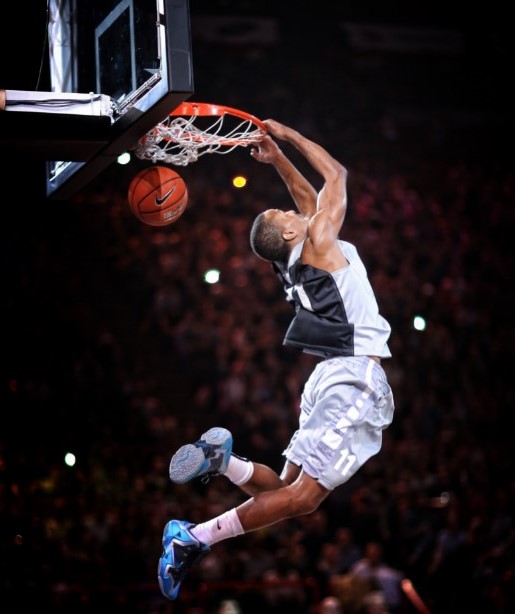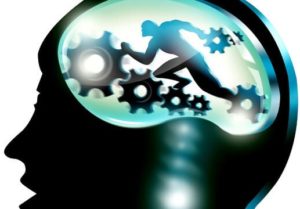
![]()
By Dr. John R. Mishock, PT, DPT, DC
In sports, most high-level athletes (70-90%) and elite sports coaches (94%) report using motor imagery (mental or kinesthetic imagery) to enhance sports performance. (Ridderinkhof et al. J Physiol, 2015) There have been over 122 studies demonstrating the effectiveness of motor imagery in basketball, baseball, soccer, volleyball, gymnastics, dance, golf, tennis, swimming, and dart throwing. Motor imagery can improve the execution of sports-specific movements, enhance self-confidence, reduces stress or anxiety, and enhances motivation. (Mizuguchi et al. J Phys Fitnes Sports Med, 2012; Williams et al. J sports Exc. 2013; Dhouibi et al. Front in Psych, 2021) Motor imagery is the mental execution of activity without overt movement or muscle contraction. Motor imagery trains the brain and nervous system, similar to active training. The bottom line, if the athlete performs the actual activity or uses motor imagery, they are functionally equivalent neurologically.
Motor imagery is performed in the first person (You shoot the ball) or third person (You watch yourself shoot the ball). Motor imagery is further divided into visual motor imagery (Visualizing oneself performing the task) and kinesthetic motor imagery (mentally feeling aspects of the task). Studies show that combining kinesthetic and visual-motor imagery in the first person produces the best results, especially with sports involving speed and movement coordination. (Zapala et al. Int J Environ Res, 2021) A study using first person, visual, and kinesthetic motor imagery before shooting basketball free throws showed an 84% chance of having a beneficial result on free throw success. (Kanthack et al. Rev Bras. Cine, 2014) Hall of Fame NBA player Steve Nash used motor imagery before shooting free throws during games, helping him achieve a 90% free throw accuracy for his career.
The ability to perform motor imagery depends on the richness and quality of the movement in one’s memory. The greater the memory of the movement, the greater capacity to transform and change the brain’s neural circuitry. Repetitive practice drives brain synaptic plasticity (learning), facilitating skill development. (Ungerleider et al., 2002; Doyon and Benali, 2005; Dayan and Cohen, 2011).

There are four key elements (The 4Rs) to motor imagery relaxation, realism, regularity, and reinforcement. (Hale 1998)
Relaxation: During motor imagery training, a relaxed mind and body are essential to enhance learning. Using a relaxation technique such as square breathing (breath in a count of 4, hold count of 4, breath out count of 4, hold count of 4) and progressive muscle relaxation (contracting muscles in regions of the body for a count of 5 seconds) can relax the body promoting an optimal environment for mental training.
Realism: Create imagery as specific as possible to the desired skill. Use detailed movement patterns and kinesthetic feelings, i.e., the feel of the ball, the sounds in the arena, the specific movements to be trained. Break down the image into small components and visualize those components. i.e., In basketball shooting, the particular action of the foot, legs, trunk, arms, legs, trunk, eyes, hands, and breathing. Try to include emotional feelings in your images. i.e., The intensity and excitement of the championship game. Incorporate as many senses (sight, smell, touch, sound) into your imagery. Make the imagery positive, demonstrating the highest confidence level in the pressure situation. “You only achieve what you believe.”
Regularity: Motor imagery is most effective when used for at least 5-15 minutes multiple times per week for several weeks to months. (Rahman et al. J Adv Sort Phys Edu.)
Reinforcement: “Write it down, make it happen”. Write out detailed imagery scripts. Review the scrips regularly or make an audio recording of the script. When making an audio recording, use relaxation music as background noise to enhance relaxation. Start the audio recording with a relaxation technique.
Motor imagery can be combined with movement during performance rehearsal to enhance training. For example, in learning to shoot a basketball, the specific movements could be rehearsed without a ball, emphasizing critical components of the shot. The player goes through the shooting motion visualizing the ball going through the basket while working on key mechanics of the shot.
Dr. Mishock is one of only a few clinicians with doctorate level degrees in both physical therapy and chiropractic in the state of Pennsylvania.
He has also authored two books; “Fundamental Training Principles: Essential Knowledge for Building the Elite Athlete”, “The Rubber Arm; Using Science to Increase Pitch Control, Improve Velocity, and Prevent Elbow and Shoulder Injury” both can be bought on Amazon.
If pain or limited function is keeping you from doing the activities you enjoy,
We can help!
Reduce pain and increase function
Call for a FREE Phone Consultation or to schedule your visit 610-327-2600.
Locations: Gilbertsville, Skippack, Phoenixville, Steiner Medical, Boyertown, Pottstown, and Limerick (inside the Spring Valley YMCA).
Appointments available 7:00am to 8:00pm, ALL locations, most days!
Saturday Appointments available
Visit our website to REQUEST AN APPOINTMENT, read informative articles, meet our physical therapy staff, and learn about our treatment philosophy. https://mishockpt.com/request-appointment/
